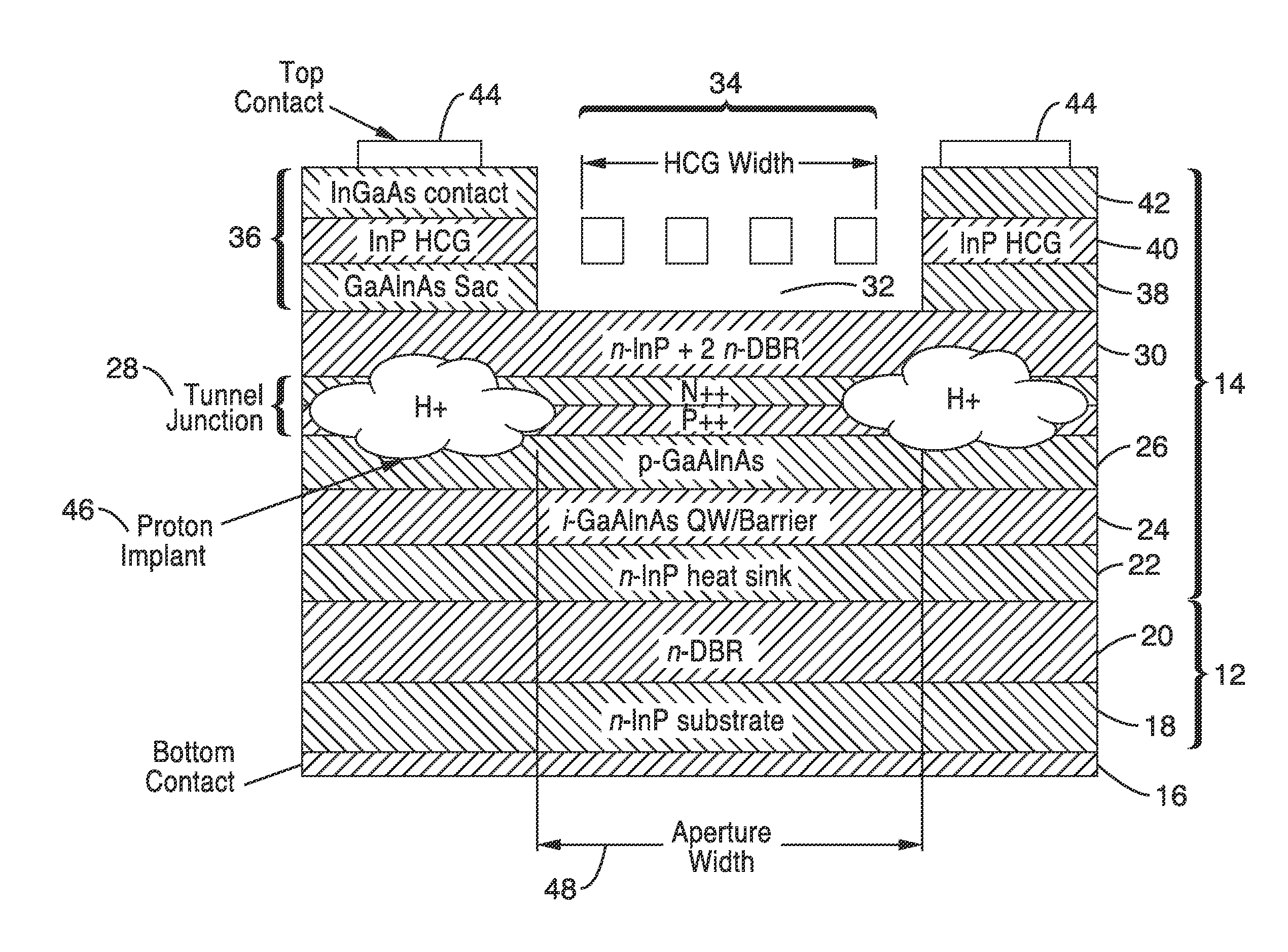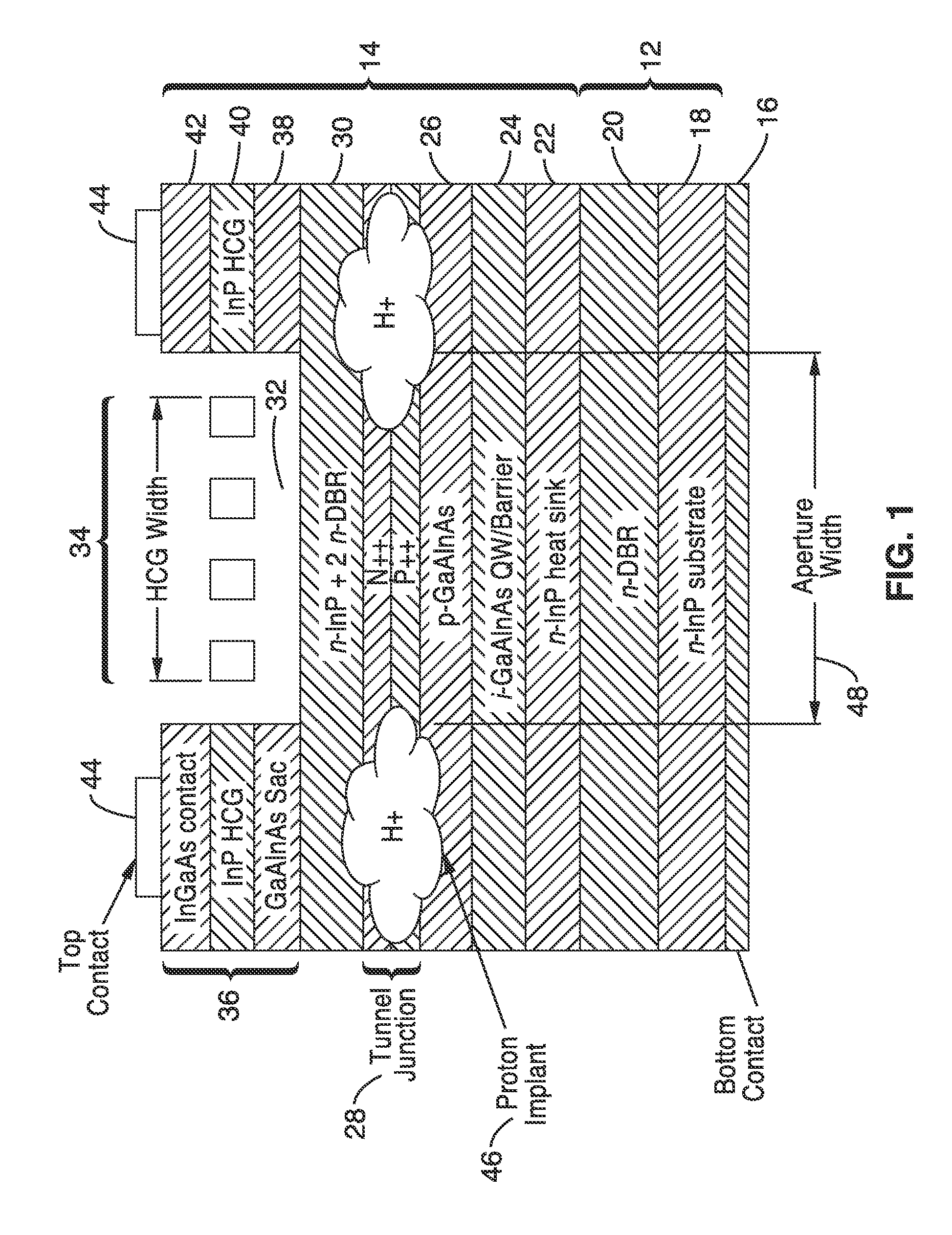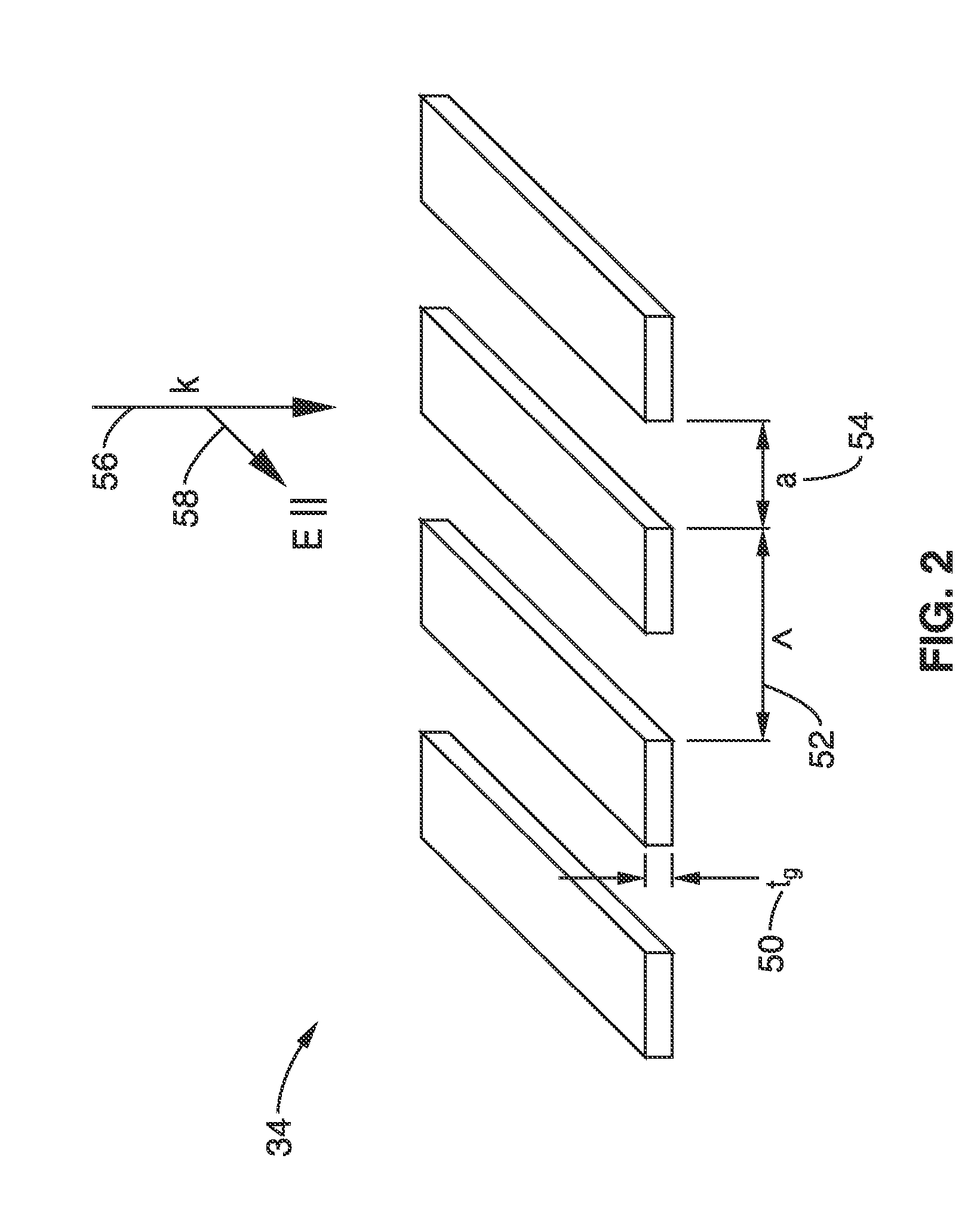High contrast grating integrated vcsel using ion implantation
a high contrast grating and ion implantation technology, applied in the field of vcsels, can solve the problem of extremely difficult to produce vcsels beyond 1.3 m
- Summary
- Abstract
- Description
- Claims
- Application Information
AI Technical Summary
Benefits of technology
Problems solved by technology
Method used
Image
Examples
embodiment 1
[0095]2. The apparatus of embodiment 1, wherein said electrical confinement layer comprises ion implantation surrounding an aperture having a desired aperture width.
[0096]3. The apparatus of embodiment 1, wherein said ion implantation comprises proton implantation.
[0097]4. The apparatus of embodiment 1, wherein said high-contrast grating (HCG) provides optical confinement by acting as a lens.
[0098]5. The apparatus of embodiment 1: wherein said high-contrast grating (HCG) provides optical confinement by acting as a lens; wherein said HCG is configured for optical phase variation in response to non-uniform grating spacing to provide optical focusing of the light interacting with said HCG.
[0099]6. The apparatus of embodiment 1, wherein material for said high-contrast grating (HCG) is selected from a group of semiconductor materials consisting of Indium Phosphide (InP), InGaAlAs, or GaAlAs.
[0100]7. The apparatus of embodiment 1, further comprising an electrical conduction layer disposed...
embodiment 8
[0102]9. The apparatus of embodiment 8, wherein said micro-mechanical actuator comprises an electrostatic force actuator which is actuated in response to an applied voltage level.
[0103]10. The apparatus of embodiment 8, wherein said micro-mechanical actuator comprises a thermal actuator which is actuated in response to an applied current.
[0104]11. The apparatus of embodiment 1, wherein said apparatus comprises a vertical cavity surface emitting laser (VCSEL) configured for output emissions in the 0.85 μm to 2.3 μm wavelength range.
[0105]12. The apparatus of embodiment 1, wherein said apparatus comprises a vertical cavity surface emitting laser (VCSEL) fabricated from Indium Phosphide (InP).
[0106]13. The apparatus of embodiment 1, further comprising: a sacrificial layer disposed between said high-contrast grating (HCG) and said electrical confinement layer; wherein the depth and wavelength of said vertical resonator is determined in response to the extent of removal of said sacrifici...
embodiment 14
[0108]15. The apparatus of embodiment 14, further comprising a tunnel junction disposed over said active layer for removing the majority of p-doped materials.
[0109]16. The apparatus of embodiment 14, wherein said apparatus comprises a vertical cavity surface emitting laser (VCSEL) fabricated from Indium Phosphide (InP) lattice matched materials.
[0110]17. The apparatus of embodiment 14, further comprising: a micro-mechanical actuator coupled to said high-contrast grating (HCG); wherein said HCG is movably retained over said vertical resonator cavity; and wherein the depth of the vertical resonator cavity is changed, to alter the wavelength of the second portion of the light which is output, in response to one or more actuation levels of said micro-mechanical actuator.
PUM
 Login to View More
Login to View More Abstract
Description
Claims
Application Information
 Login to View More
Login to View More - R&D
- Intellectual Property
- Life Sciences
- Materials
- Tech Scout
- Unparalleled Data Quality
- Higher Quality Content
- 60% Fewer Hallucinations
Browse by: Latest US Patents, China's latest patents, Technical Efficacy Thesaurus, Application Domain, Technology Topic, Popular Technical Reports.
© 2025 PatSnap. All rights reserved.Legal|Privacy policy|Modern Slavery Act Transparency Statement|Sitemap|About US| Contact US: help@patsnap.com



